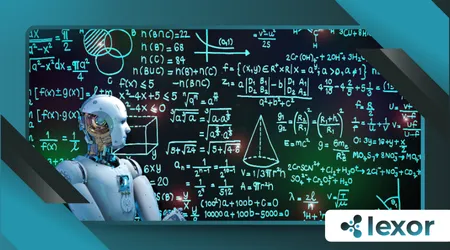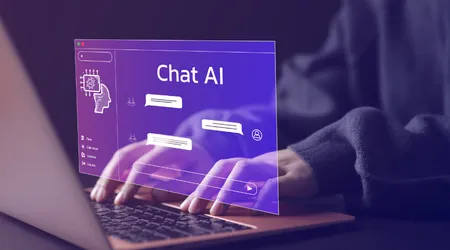AI in Education: How Machine Learning Helps Children Learn

The integration of AI in education is revolutionizing how children learn, offering personalized experiences that adapt to individual needs.
As classrooms evolve, machine learning is becoming a cornerstone of modern education, empowering students and teachers alike.
But how exactly is this technology shaping the future of learning?
Let’s explore the transformative role of AI in education, its benefits, challenges, and what it means for the next generation.
The Rise of Personalized Learning
One of the most significant contributions of AI in education is its ability to personalize learning.
Traditional classrooms often follow a one-size-fits-all approach, leaving some students behind while others feel unchallenged.
Machine learning algorithms, however, analyze student performance in real-time, identifying strengths and weaknesses.
For instance, platforms like Khan Academy and DreamBox use AI to tailor lessons, ensuring each child progresses at their own pace.
A 2022 study by the Stanford Graduate School of Education found that students using AI-driven learning tools improved their test scores by 30% compared to those in traditional settings.
This data underscores the potential of AI to bridge learning gaps and foster academic success.
Moreover, personalized learning not only addresses academic needs but also accommodates different learning styles.
Some students may benefit from visual aids, while others may require auditory or kinesthetic approaches.
AI’s adaptability ensures that each child receives instruction in a manner that resonates with them, enhancing overall comprehension and retention.
+ Digital Literacy: Essential Skills for Modern Kids
Enhancing Engagement Through Adaptive Technologies
Engagement is a critical factor in effective learning, and AI is proving to be a game-changer.
Interactive tools powered by machine learning, such as chatbots and virtual tutors, provide instant feedback and support.
These technologies not only answer questions but also adapt their responses based on the student’s comprehension level.
For example, Carnegie Learning’s MATHia platform uses AI to simulate a one-on-one tutoring experience.
It identifies misconceptions and provides targeted exercises to reinforce understanding.
This level of interaction keeps students engaged and motivated, transforming learning into a dynamic and enjoyable process.
Additionally, gamification elements integrated into AI tools can further enhance engagement.
By incorporating game-like features, students are encouraged to take risks and experiment without the fear of failure.
This approach not only makes learning fun but also fosters a growth mindset, where challenges are seen as opportunities for improvement.
Breaking Down Language Barriers
AI is also breaking down language barriers, making education more accessible to non-native speakers.
Tools like Google Translate and Duolingo leverage machine learning to offer real-time translation and language practice.
In multicultural classrooms, this technology ensures that every student can participate fully, regardless of their linguistic background.
Moreover, AI-powered speech recognition software helps children with speech impairments communicate more effectively.
By analyzing speech patterns, these tools provide corrective feedback, enabling students to improve their language skills over time.
Furthermore, language learning apps often incorporate cultural context, enriching the educational experience.
This not only aids in language acquisition but also promotes understanding and appreciation of diverse cultures.
As students learn new languages, they also develop empathy and global awareness, essential skills in today’s interconnected world.
The Role of AI in Special Education
Children with learning disabilities often face unique challenges in traditional educational settings.
AI in education is addressing these challenges by offering tailored solutions.
For instance, apps like ModMath assist students with dyslexia by converting handwritten math problems into digital text.
Similarly, AI-driven tools like Brainly provide personalized study plans for children with ADHD, helping them stay focused and organized.
These innovations are not just about accessibility; they’re about inclusivity.
By leveraging AI, educators can create a more equitable learning environment where every child has the opportunity to thrive.
Additionally, AI can help teachers identify specific learning needs more efficiently.
By analyzing data on student performance, educators can adjust their teaching methods and materials to better suit individual students.
This proactive approach ensures that all students receive the support they need to succeed academically and socially.

Data-Driven Insights for Teachers
AI isn’t just benefiting students—it’s also empowering teachers.
Machine learning algorithms analyze vast amounts of data to provide actionable insights.
For example, platforms like BrightBytes and Classcraft use AI to track student engagement and performance, helping teachers identify at-risk students early.
This data-driven approach enables educators to tailor their teaching strategies, ensuring that no child falls through the cracks.
It also reduces the administrative burden on teachers, allowing them to focus on what they do best: teaching.
Moreover, these insights can foster collaborative discussions among educators.
By sharing data trends and strategies, teachers can learn from one another and implement best practices across their classrooms.
This collaborative environment not only enhances teaching effectiveness but also promotes a culture of continuous improvement within the school.
Ethical Considerations and Challenges
While the benefits of AI in education are undeniable, it’s essential to address the ethical concerns surrounding its use.
Data privacy is a significant issue, as AI systems often rely on sensitive student information.
Ensuring that this data is protected is crucial to maintaining trust.
Another challenge is the digital divide.
Not all schools have access to the resources needed to implement AI-driven tools, potentially exacerbating educational inequalities.
Policymakers and tech companies must work together to ensure that these technologies are accessible to all.
Additionally, there is a need for transparency regarding how AI algorithms make decisions.
Educators and parents should understand the criteria used by AI systems to assess student performance and provide recommendations.
This transparency can help build trust and ensure that AI is used responsibly in educational settings.
The Future of AI in Education
The potential of AI in education is vast, but its future will depend on how we navigate the challenges.
As machine learning continues to evolve, we can expect even more innovative solutions, from virtual reality classrooms to AI-generated curricula.
However, it’s important to remember that AI is a tool, not a replacement for human educators.
The role of teachers will remain central, with AI serving as a complement to their expertise.
Together, they can create a learning environment that is both effective and inclusive.
Moreover, ongoing professional development for educators will be essential.
As AI tools become more sophisticated, teachers must be equipped with the knowledge and skills to leverage these technologies effectively.
This investment in training will ensure that educators can maximize the benefits of AI while maintaining their critical role in student development.

Tables: Key Insights on AI in Education
| Aspect | Impact of AI |
|---|---|
| Personalized Learning | Tailors lessons to individual needs, improving academic performance. |
| Engagement | Interactive tools keep students motivated and engaged. |
| Accessibility | Breaks down language barriers and supports students with disabilities. |
| Teacher Support | Provides data-driven insights to enhance teaching strategies. |
| Ethical Concerns | Raises issues around data privacy and the digital divide. |
++ Assistive Technology: Inclusion in Education
| AI Tool | Function |
|---|---|
| Khan Academy | Offers personalized learning paths based on student performance. |
| MATHia | Simulates one-on-one tutoring for math students. |
| ModMath | Assists students with dyslexia in solving math problems. |
| Brainly | Provides personalized study plans for students with ADHD. |
| BrightBytes | Tracks student engagement and performance for teachers. |
Conclusion
The integration of AI in education is transforming how children learn, offering personalized, engaging, and inclusive experiences.
From adaptive learning platforms to data-driven insights for teachers, machine learning is reshaping the educational landscape.
However, as we embrace these innovations, it’s crucial to address the ethical and practical challenges they present.
By doing so, we can ensure that AI serves as a force for good, empowering every child to reach their full potential.
The future of education is here, and it’s powered by AI.
As we move forward, collaboration among educators, policymakers, and tech companies will be vital.
Together, we can create a future where AI enhances education for all students, fostering a generation of learners equipped for the challenges ahead.
